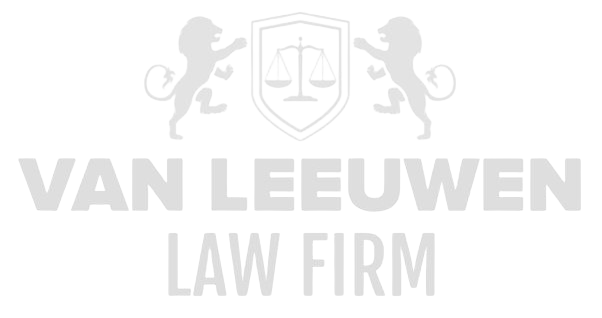The combatting of financial and economic crime requires a systematic and integrated approach in which supervision, investigation, and private expertise are seamlessly aligned. In today’s financial world, characterized by complex structures, cross-border transactions, and innovative financial instruments, isolated enforcement by individual entities is no longer sufficient. Effective prevention and enforcement necessitate in-depth collaboration between regulators, the Public Prosecution Service, and private actors, each of whom brings specific expertise, legal powers, and operational capabilities to the table. The objective of such an integrated approach is to create a coherent and proactive system capable not only of responding reactively to concrete offenses but also of identifying risk profiles and patterns indicative of potential future fraud, money laundering, or other forms of economic crime.
It is equally critical that this collaboration does not remain limited to incidental information exchanges or ad hoc coordination. Public-private cooperation must be embedded within robust legal frameworks that clearly define the scope of information exchange, the protection of confidential data, and the responsibilities of the involved parties. The absence of clear legal guidelines may give rise to legal risk, reputational damage for financial institutions, and ultimately a weakening of enforcement capacity. Simultaneously, attention must be paid to the operationalization of these frameworks to ensure that information exchange is efficient, proportionate, and legally sustainable. Only through the combination of legal certainty and practical applicability can the integrated approach to financial and economic crime be meaningfully strengthened.
Strengthening Collaboration Between Regulators, the Public Prosecution Service, and Private Parties
A fundamental pillar of an effective integrated approach is the intensification of collaboration between regulators, the Public Prosecution Service, and private actors such as banks, accounting firms, and compliance advisory services. Regulators possess specialized knowledge of sectoral standards, risk indicators, and market practices, while the Public Prosecution Service has the instruments for criminal investigation and prosecution. Private actors contribute operational expertise and access to internal data, transaction records, and client information, which can be essential for early risk detection. Optimizing these complementary capabilities requires the establishment of formal structures for cooperation, with clearly defined roles, responsibilities, and escalation procedures.
Effective collaboration can be fostered through the creation of permanent consultation mechanisms, shared databases, and joint analyses of trends in money laundering, fraud, and corruption. This must be supported by a culture of mutual trust, where the sharing of information does not expose parties to liability risks or unwanted reputational exposure. At the same time, attention must be given to harmonizing operational procedures, so that signals emerging within private actors are communicated promptly to regulators or the Public Prosecution Service, without causing delays or fragmentation of enforcement capacity.
Moreover, the pursuit of collaboration must incorporate an international dimension, given the globalization of financial markets and the increasing prevalence of cross-border fraud. Bilateral and multilateral cooperation frameworks, joint task forces, and the exchange of best practices are necessary to ensure that the Dutch supervisory and enforcement regime does not operate in isolation, but is effectively connected with international initiatives such as those of the European Union, the Financial Action Task Force (FATF), and Interpol.
Legal Frameworks for Public-Private Information Exchange
Ensuring robust public-private cooperation requires the implementation of clear legal frameworks that precisely define the boundaries, responsibilities, and rights of the parties involved. These frameworks must simultaneously safeguard financial integrity and enforcement capacity, while protecting confidential information, trade secrets, and personal data. The absence of such frameworks may lead to legal uncertainty, risks of violating privacy regulations, and a reduced willingness of private actors to share relevant information.
The design of these frameworks must take into account the complexity of legislation at both national and European levels. This includes provisions relating to the General Data Protection Regulation (GDPR), specific sectoral regulations applicable to banks, accountants, and trust offices, and international standards regarding anti-money laundering and sanctions. The frameworks must clearly establish under what circumstances data may be shared, who has access, the purposes for which data may be processed, and how information security is ensured.
Furthermore, these frameworks should include mechanisms for supervision, auditing, and accountability, so that parties not only know what is legally permissible but also how compliance will be monitored and enforced. This creates an environment in which information exchange is not only possible but also effective, legally sustainable, and enduring over the long term.
Effective Implementation of Anti-Money Laundering Directives (AMLD)
Compliance with the European Anti-Money Laundering Directives (AMLD) constitutes a crucial element of the integrated fight against financial crime. AMLD obligations require financial institutions to establish risk-based systems for customer due diligence, transaction monitoring, and the reporting of suspicious transactions. Proper implementation of these obligations necessitates not only technical and organizational infrastructure but also a profound understanding of relevant risk factors, behaviors, and structures indicative of money laundering practices.
The implementation of AMLD regulations must also be aligned with broader enforcement strategies, so that reports of suspicious transactions are effectively followed up by regulators and the Public Prosecution Service. This requires an integrated system in which signals from the private sector can be quickly analyzed, prioritized, and, where necessary, investigated, without causing overburdening of enforcement authorities or inefficient use of resources. At the same time, financial institutions must be supported with clear guidelines, best practices, and, where appropriate, supervision-focused dialogue to ensure the practical applicability of AMLD obligations.
Another dimension of effective implementation concerns the international harmonization of anti-money laundering measures. Cross-border transactions require rules and procedures to be compatible across multiple jurisdictions and cooperation among regulators in different countries to be effectively organized. In the absence of such coordination, gaps may emerge that allow criminal networks to exploit the financial system.
Combining Criminal and Administrative Enforcement
The integration of criminal and administrative enforcement instruments is essential to achieving a coherent and effective approach to financial crime. Criminal sanctions, such as prosecution and imprisonment, provide a strong deterrent against serious violations, while administrative measures, such as fines, coercive penalties, or license revocations, offer rapid and flexible intervention capabilities. Combining both approaches enables regulators and the Public Prosecution Service to act both preventively and repressively, taking into account the severity of the offense and the risks posed to the financial market.
The success of a combined enforcement strategy depends on careful coordination between regulators and the Public Prosecution Service. This includes sharing information about suspicious transactions, coordinating investigations, and aligning sanctions to avoid duplication, conflicting decisions, or legally contestable actions. Furthermore, an integrated enforcement approach can strengthen the overall culture of compliance, as financial institutions incorporate both criminal and administrative risks into their risk management processes.
A key consideration is that combining criminal and administrative enforcement brings legal and operational complexities. These include issues such as the delineation of powers, standards of proof, rights of suspects, and the prioritization of concurrent investigations. Navigating these complexities carefully is essential to ensure both effectiveness and legal sustainability, while maintaining a consistent and transparent policy toward financial institutions and the broader market.
Refinement of Sanction Regimes for Non-Compliance with Reporting Obligations
Effectively sanctioning non-compliance with reporting obligations constitutes a crucial instrument within the integrated approach to financial crime. Financial institutions and advisors bear a legal duty to report unusual transactions, potential money laundering activities, and other high-risk operations promptly to competent authorities. The absence of adequate sanctions may lead to normative weakening, allowing criminal networks easier access to the financial system. Refining the sanction regime therefore requires a balance between deterrence, proportionality, and operational feasibility, ensuring that institutions are both incentivized to comply and provided with sufficient legal certainty.
A modern sanction regime must take into account the complexity of financial structures and the variability in organizational capacity among institutions. Beyond classical financial penalties, targeted administrative measures, such as restrictions on business activities or enhanced supervision, may be applied. This approach supports a graduated escalation model, in which severity, intent, and repeated behavior are considered, ensuring that enforcement actions are both legally sustainable and strategically effective.
Simultaneously, sanctions should be accompanied by transparent communication to the market, so that the threat of enforcement is clearly conveyed and a broader preventive effect is achieved. This requires regulators not only to act decisively but also to apply sanctions consistently and predictably, taking into account precedents and international best practices.
Transparency Requirements for Financial Institutions and Advisors
Transparency represents an essential tool in preventing financial and economic crime. Financial institutions and advisors must comply with detailed information obligations, not only to facilitate supervision but also to ensure trust in the financial system. These requirements include, among other things, the full and timely reporting of transactions, documentation of risk assessments, and provision of audit trails that clarify the origin and destination of funds.
Adequate fulfillment of transparency requirements demands the establishment of internal compliance structures, standardized reporting processes, and advanced data analysis techniques. This enables regulators to monitor signals of abnormal behavior, unusual transactions, or potential criminal patterns effectively. It is not merely about data collection, but also about ensuring the accuracy, completeness, and accessibility of information, allowing enforcement authorities to intervene promptly and appropriately.
Furthermore, transparency has a preventive effect. By requiring financial institutions and advisors to maintain a high level of openness and accountability, the risk of criminal networks exploiting the financial system is significantly reduced. Transparency also establishes a clear normative standard against which compliance can be measured, promoting a culture of integrity and responsible financial conduct.
Rules on UBO Registration and the Balance between Privacy and Supervision
Registering Ultimate Beneficial Owners (UBOs) plays a central role in preventing the misuse of legal entities for money laundering, fraud, and tax avoidance. The UBO register provides transparency regarding the natural persons behind legal entities, enabling regulators and financial institutions to assess risks more effectively. At the same time, it is essential that this registration be carefully balanced against fundamental privacy rights, ensuring that personal data is adequately protected and that compliance with the General Data Protection Regulation (GDPR) is maintained.
The legal frameworks surrounding UBO registration must guarantee both accessibility and integrity. Regulators have a legitimate interest in consulting data for risk assessment, investigation, and research purposes, while public access to certain information must be proportionally and carefully regulated. Achieving this balance is crucial to ensure effective supervision while respecting the rights of natural persons.
Additionally, a well-functioning UBO system requires continuous monitoring and data quality management. Registrations must be up-to-date, verifiable, and auditable to prevent erroneous or outdated data from causing legal uncertainty or operational inefficiencies. Optimizing these processes contributes to a robust and reliable supervisory system capable of effectively mitigating financial crime.
Digital Forensic Analysis as Evidence in Complex Financial Cases
In an era of digital transactions and sophisticated financial structures, digital forensic analysis constitutes an indispensable tool for investigating and evidencing financial crime. Every transaction, communication, and interaction within the financial ecosystem leaves digital traces that can be documented, verified, and presented as evidence in criminal and administrative proceedings when proper analytical methods are applied. The ability to trace, reconstruct, and analyze digital data largely determines the effectiveness of enforcement actions.
The application of digital forensic analysis requires specialized knowledge, advanced technology, and legal expertise to ensure that collected data is obtained and interpreted in a legally valid manner. It involves not only identifying suspicious transactions but also understanding complex patterns, network connections, and hidden structures indicative of criminal activity. The reliability, integrity, and forensic admissibility of these analyses are crucial, as legal proceedings can be compromised if the methodology or the provenance of the data is in doubt.
Beyond investigation, digital forensic analysis also serves a preventive and risk-oriented function. Continuous monitoring and automated detection systems allow potential fraud or money laundering activities to be identified at an early stage. This not only strengthens the capacity of regulators but also enables financial institutions to implement proactive risk management and compliance measures, safeguarding the integrity of the financial system.
Use of AI for Risk Detection and Compliance Monitoring
Artificial Intelligence (AI) offers unprecedented opportunities to enhance risk detection and compliance monitoring within the financial sector. By applying machine learning algorithms and advanced data analytics, patterns and anomalies in transaction data can be identified that would otherwise go unnoticed. AI allows transactions to be evaluated in real time, trends to be forecasted, and complex transaction networks to be analyzed, enabling both regulators and financial institutions to intervene more quickly and effectively.
However, implementing AI requires careful legal and operational consideration. Algorithms must be transparent, explainable, and auditable to ensure that decision-making is not only efficient but also legally valid and verifiable. Institutions must also establish a robust governance framework, including procedures for data quality, monitoring, and evaluation, to prevent errors or biases in the systems from resulting in incorrect decisions or inappropriate risk classifications.
A strategic use of AI can significantly strengthen overall enforcement capacity. By refining risk profiles, identifying suspicious patterns early, and linking analysis to legal and compliance obligations, a proactive system is created that not only reacts to violations but actively contributes to preventing financial crime.
International Coordination in Cross-Border Fraud
Effective combatting of cross-border financial crime requires a high level of international coordination and cooperation between regulators, law enforcement agencies, and private sector participants across different jurisdictions. Financial fraud and money laundering often have a transnational character, with criminal networks exploiting legal gaps, divergent regulations, and limited information-sharing between countries. Without a coordinated approach, there is a significant risk that offenders may relocate to jurisdictions with weaker oversight, thereby substantially undermining the effectiveness of national enforcement measures.
International coordination encompasses both legal and operational components. From a legal perspective, this requires harmonization of laws and regulations concerning financial offenses, sanctions, reporting obligations, and data protection. Countries must reach agreement on definitions of violations, standards for customer identification and risk assessment, and procedures for information exchange. Operationally, effective coordination entails the development of joint task forces, real-time data sharing, shared risk profiles, and coordinated investigations. Mechanisms must ensure the confidentiality of sensitive information while enabling timely and targeted intervention.
A crucial instrument in international cooperation is participation in multilateral initiatives and supervisory networks, such as the Financial Action Task Force (FATF), Europol, Interpol, and the institutional frameworks of the European Union (EU). These platforms provide a framework for sharing best practices, coordinating cross-border investigations, and establishing joint guidelines for supervision and enforcement. Additionally, bilateral treaties and memoranda of understanding can strengthen operational collaboration between national authorities, facilitating faster, legally sound, and more effective information exchange.
Effective international coordination also requires the use of advanced technologies, including shared databases, digital analytics tools, and automated alert and monitoring systems. These tools enable regulators and law enforcement agencies to trace, analyze, and investigate suspicious transactions and networks across borders. By linking data from multiple jurisdictions, a holistic view of criminal activity can be established, allowing preventive measures and enforcement actions to be better aligned with the risks of international fraud.
Finally, cross-border coordination demands a culture of trust and reciprocity among participating countries and private sector stakeholders. Legal frameworks, operational procedures, and technological solutions must operate in tandem with institutional cooperation and a shared commitment to combat financial crime. Only through this integrated approach can a coherent, internationally effective, and sustainable system be established, making it significantly more difficult for criminal networks to exploit the boundaries of financial oversight.













